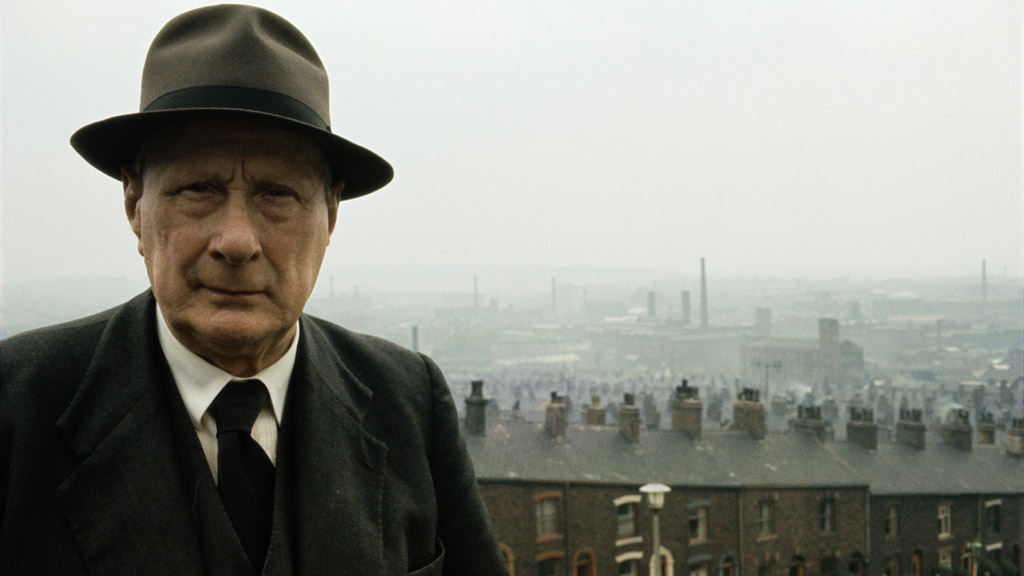How Lowry captured my north – in all its grimy glory
As the Tate opens a major exhibition of LS Lowry’s industrial landscapes, Oldham-born artist Paul Stafford remembers life in the slums and cotton mills that inspired the paintings.

I went to Lowry’s funeral. It was 1976 and I was a 17-year-old art student at Rochdale College, more interested in Barnett Newman and Jackson Pollock than an old bloke who painted “matchstick men and matchstick cats and dogs”.
With my Keep On Truckin’ T-shirt and long hair, I thought I was the dog’s b******s.
Me and my best mate, Melvyn Bagshaw, were up for student rep. I beat him and went to the funeral as the college’s student rep.
Given the task of transporting a painting Lowry bequeathed to the college, I had no interest in, or idea about, this Northern icon-to-be.
But when I look back on my life I can only marvel at his capacity for describing the north, my north, in all its dirty detail. It was no Jerusalem.
Deep in Lowry territory
My earliest memory of the north, and of Oldham where I was born, was coming home with a dead rat on my head, singing “Davy Crockett, Davy Crockett – king of the wild frontier”. You had to get your entertainment where you could as a five-year-old growing up deep in Lowry territory.
Me and my twin would play on the “Injun beds” (engine beds) of long-defunct satanic mills, with exotic names like Nile, Majestic and Cairo betraying their roots as oily, dangerous outposts.
My gran used to work in the mills with my mum. My mum was a “fluffer” employed, age 12, to scurry around under the Jennies (spinning looms) at the mill. We lived in a two-up, two-down house (slum) on North Street, Oldham. It would now be a heritage centre.
The wonders of the new NHS: daytime visits from the GP, a fag dangling from his lips as he pontificated.
My twin and me shared a bed and a bedroom with my older brother. He got scarlet fever and, following stiff medical advice, my mum strung a wet blanket across our bedroom to separate “the twins” from my scarlet brother.
Christ, the wonders of the new NHS: daytime visits from the GP, a fag dangling from his lips as he pontificated, its ash about to crash onto the candlewick bedspread and my coughing chest. Pass the ashtray, mum.

Etched on the memory
Lowry’s landscape is etched on my memory, from the cobbled streets of Oldham to the knocker-up employed at a penny a week to “knock up” the mill workers, tapping on their bedroom windows at half five in the morning. No-one had alarm clocks, let alone TVs or mobile phones.
We really did spark our clogs on the cobbles and really did share tin baths in front of the fire, standing up round the Formica table for our tea (southern softies call it “dinner”) until we were 16.
My kids think it was a thousand years ago, but as a baby boomer who never had it so good, my abiding memory is the rainy, dark, depressive streets, workers hunched over against the sleet, tramping up the steely streets, sharing gallows humour, warm beer and fags in the tap room.
Whatever you think of his work, it was real, an honest man’s interpretation of his surroundings.
Lowry captured a moment in life now long forgotten, and for that he should be thanked and applauded.
Whatever you think of his work, it was real, an honest man’s interpretation of his surroundings that truly did reflect “life up north”, with all its dour beauty and charm.
He was an artist of his time who did what all artists who are any good do – he looked at life around him and obsessively told a story that we all now think quaint but which, back then, was real, gritty, dirty and dangerous. Rickets and bed bugs. How romantic.
Paul Stafford MA(Slade), Association of the Royal British Society of Sculptors, is an honorary fellow of Kingston University.
Lowry and the Painting of Modern Life runs until 20 October at Tate Britain.




